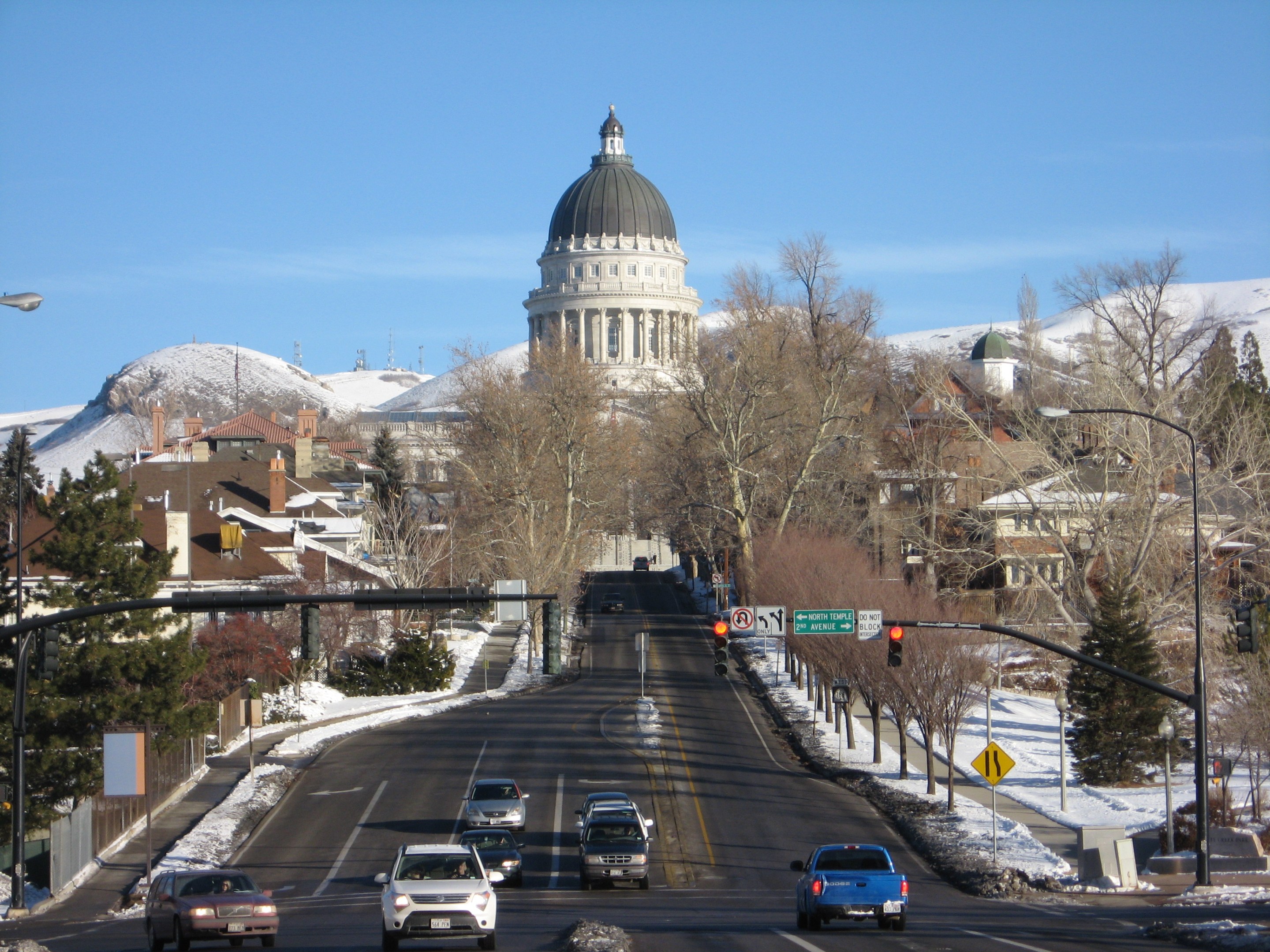State transportation officials from throughout the Western United States are meeting this week in Utah’s capital for golf outings, work sessions, a pub crawl, dinners and sponsored breaks, and nowhere on the agenda is there a spot for the most pressing issue.
Fittingly, the headquarters of the four days of elbow rubbing and bureaucratic camaraderie is the most dangerous surface street in Salt Lake City, a street owned and operated by the conference host.
State Street, known to transportation officials as US-89, is owned, designed and operated by the Utah Department of Transportation. Even more than other state-owned surface roads in town, State Street is where people walking and biking are most commonly hit by people driving cars.
But that’s not on the agenda for the WASHTO 2021 Conference at the Grand America Hotel, a grandiose building surrounded on three sides by state-owned surface roads where people are frequently hit by people driving cars.
The data is well-known by UDOT, an agency profoundly competent at designing and building car-centric spaces while at the same time ignoring the will of residents asking for safer roads. At the time the conference takes place, the agency will be working on or preparing billions of taxpayer dollars for highway widening across the region.
Notably absent from the agenda is the fact that the state — like others around the country — saw traffic deaths rise during a year that people drove less. (Let that sink in.)
Vehicle crashes are already the leading cause of death among people between the ages of 1-54. Yet when fewer people were on the road, more of them crashed and died on state-owned roads.
That news is often overlooked by residents and unwitting news reporters who focus only on data from interstate highways and spin from public relations people in transportation departments that are remarkably good at deflecting responsibility.
Just this spring, the Salt Lake Tribune happily reported that, while driving fatalities were up in 2020, fewer of them were on highways. The story notably failed to define the word “highway.”
If only they’d asked for the data not included on the news release, they’d have seen that fatal crashes were up on state roads and the state-managed roads that are supported by federal dollars. Just because a road isn’t part of the interstate system doesn’t make it, in the eyes of a state department of transportation, not a highway.
You see, State Street is a state highway. 700 East is a highway. 400 South is a highway. Redwood Road is a highway. These are surface roads, and they’re state highways.
All across town, all across the nation, surface roads that are inherently dangerous and operated for the convenience of suburban car commuters above the safety and wellness of city residents are considered state highways. And they are routinely the most dangerous place
In 2016 and 2017, 38 people walking and 27 people riding bikes were hit by people driving cars on State Street. The next year, two-thirds of Salt Lake City residents asked for safety improvements on State Street, a road with nine lanes of pavement all dedicated to the car.
What changes did UDOT allow? Next to nothing. Two blocks of mainly beautification near Downtown while the rest remains a hostile carscape cutting through the heart of the capital city. Use another street to get around, they said. We need these nine lanes.
Even if the cities these roads divide want to make changes to improve safety, sustainability, beauty and economic activity, they can’t. It is up to the state department of transportation to decide how the road will actually function. And too often, state roads are managed exclusively for the car, all other metrics and users be damned.
Farmland is gobbled up to shave 30 seconds off the commute of a suburban driver. Space that could fit valuable housing is set aside for state routes and land adjacent to it. Roads that are known to be hazardous to life and limb are ignored. Trees are cut down to minimize the objects that motorists might crash into. Sidewalks are kept narrow. Bike lanes and mixed-use trails and paths are not built. The system repeats. The conferences come and go.
Meanwhile, state roads are psychological barriers that create boundaries for daily walking routes, they divide desirable neighborhoods from undesirable ones. They are intentionally designed to repel anyone not in a private vehicle. Level of service for whom?
UDOT and state departments of transportation across the nation would be well suited to listen to residents who are asking for safer streets, but who don’t know where or how to direct their energy to make change.
For a few days next week, the people will be having a ball at the Grand America in Downtown Salt Lake City. Let’s hope they take care when crossing the road before check-in.
Taylor Anderson (@TaylorWAnderson), of Salt Lake City, is co-founder of the streets advocacy group Sweet Streets, a volunteer group working to make Utah’s capital a safer, stronger and more sustainable place.







